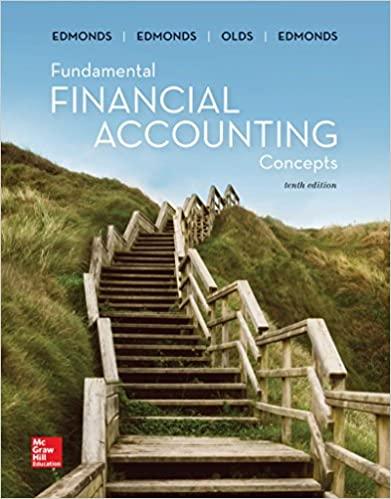Question
1. The rate of return on assets is measured by dividing net income plus interest expense by the average assets. T/F? 2. Financial statement data
1. The rate of return on assets is measured by dividing net income plus interest expense by the average assets. T/F?
2. Financial statement data are often reproduced in percentage terms, and this information can provide investors and managers with a keen sense of changes in the underlying business environment. T/F?
3.The statement of cash flows is a required financial statement. T/F?
4.Sales of noncurrent assets and long-term borrowings are both reported as cash inflows from financing activities. T/F?
5.Using the indirect approach to prepare a statement of cash flows, gains on the sale of long-term investments should be subtracted from net income to find cash provided by operating activities. T/F?
6.Dividends paid are added back to net income in order to determine cash provided by operating activities.
7.Financial statement ratio analysis may be undertaken to study liquidity, turnover, profitability, and other measures. What type of ratio is the quick ratio? A. Liquidity B. turnover. C. profitability D. Other E. None of these
8.Financial statement ratio analysis may be undertaken to study liquidity, turnover, profitability, and other measures. What type of ratio is the return on equity ratio? A. Liquidity B. turnover C. Profitability D. Other E. None of these
9.Which of the following financial ratios is not a measure of operating profitability? A. Net profit on sales ratio B. inventory turnover ratio C. Return to assets ratio D. Gross profit margin ratio E. None of these.
10.A balance sheet included cash ($4,000,000), accounts receivable ($16,000,000), inventories ($10,000,000), prepaid expenses ($2,000,000), accounts payable ($9,000,000), and accrued expenses ($7,000,000). These are the only current items. Based on the information given above, select the answer below that is correct.
A. The quick ratio is 2:1, B. The quick ratio is 1.25:1, C. The current ratio is 1.875:1, D. Both A and C. E. None of these
11.Taylor Company had net income of $50,000, paid income taxes of $20,000, and had before tax interest expense of $10,000. What was Taylor's times interest earned ratio? A. 5 B. 6 C. 7 D. 8 E. None of these
12.Royal's net accounts receivable were $500,000 at December 31, 20X5, and $600,000 at December 31, 20X6. Net cash sales for 20X6 were $200,000. The accounts receivable turnover for 20X6 was 5.0. What were Royal's total net sales for 20X6?
A. $300,000 B. $2,950,000 C. $3,000,000 D. $5,500,000 E. None of these
13.Assuming use of the direct approach for preparing a statement of cash flows, which of the following would be most likely reported as a line item in the "operating activity" section? A. Dividends paid to shareholders. B. Cash paid for taxes. C. Proceeds for issuing capital stock. D. A reduction in inventory levels. E. None of these.
14.Using an indirect approach for preparing a statement of cash flows, which of the following must be reported as supplemental information? A. Cash paid for interest B. Cash paid for taxes. C. Noncash investing/ financing activities D. All of the above E. None of these
15.A piece of equipment with an original cost of $10,000 and accumulated depreciation of $8,000 is scrapped. Using the indirect approach for a statement of cash flows, this transaction will: A. impact the operating activities section B. impact the financing activities section C. not impact the statement of cash flows. D. Both A and B. E. None of these.
16.Which of the following statements about the worksheet approach to preparing a statement of cash flows isincorrect?A. The retained earnings line can reflect dividends and income. B. Noncash investing and financing items are not included on the worksheet. C.The change in the cash line is the balancing amount for the cash flow section D. Depreciation is shown in the cash flows section. E. None of these
17.The following financial information is available for Masters Corporation for 20X5: Current Assets (end of year / beginning of year) $96,000 / $60,000 Current Liabilities (end of year / beginning of year) $76,000 / $42,000 Inventory (average / end of year) $26,000 / $30,000 Accounts Receivable (average / end of year) $45,000 / $40,000 Sales ($10,000 cash sales included) $400,000 Cost of Goods Sold $260,000 Cash (end of year) $26,000 What is the current ratio as of December 31, 20X5? (round your answer to nearest hundreths place if necessary)
Step by Step Solution
There are 3 Steps involved in it
Step: 1

Get Instant Access to Expert-Tailored Solutions
See step-by-step solutions with expert insights and AI powered tools for academic success
Step: 2

Step: 3

Ace Your Homework with AI
Get the answers you need in no time with our AI-driven, step-by-step assistance
Get Started


